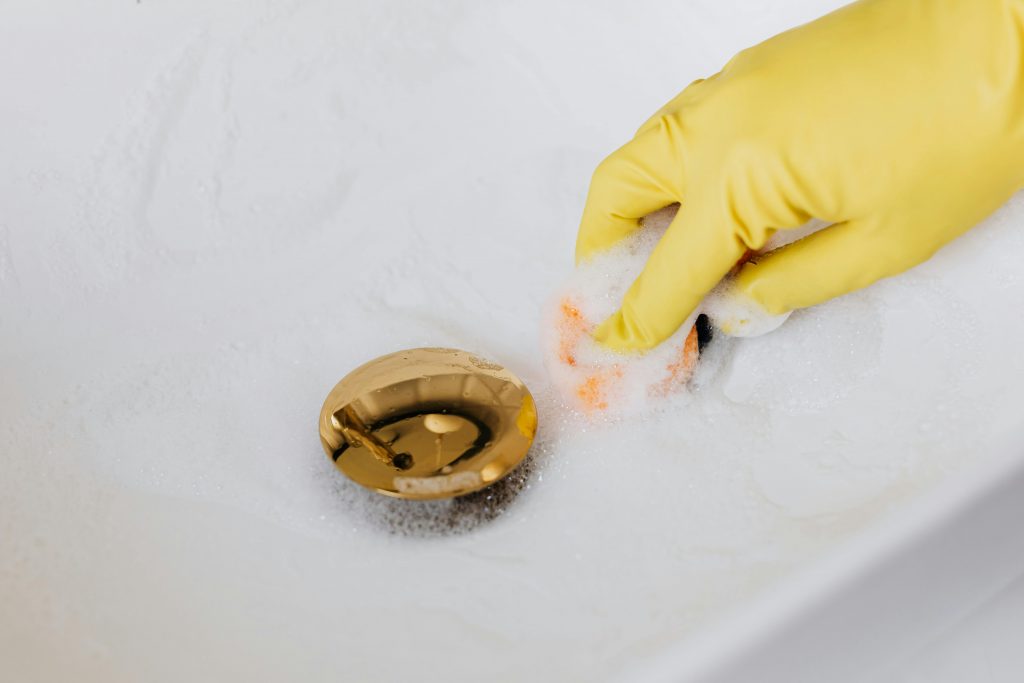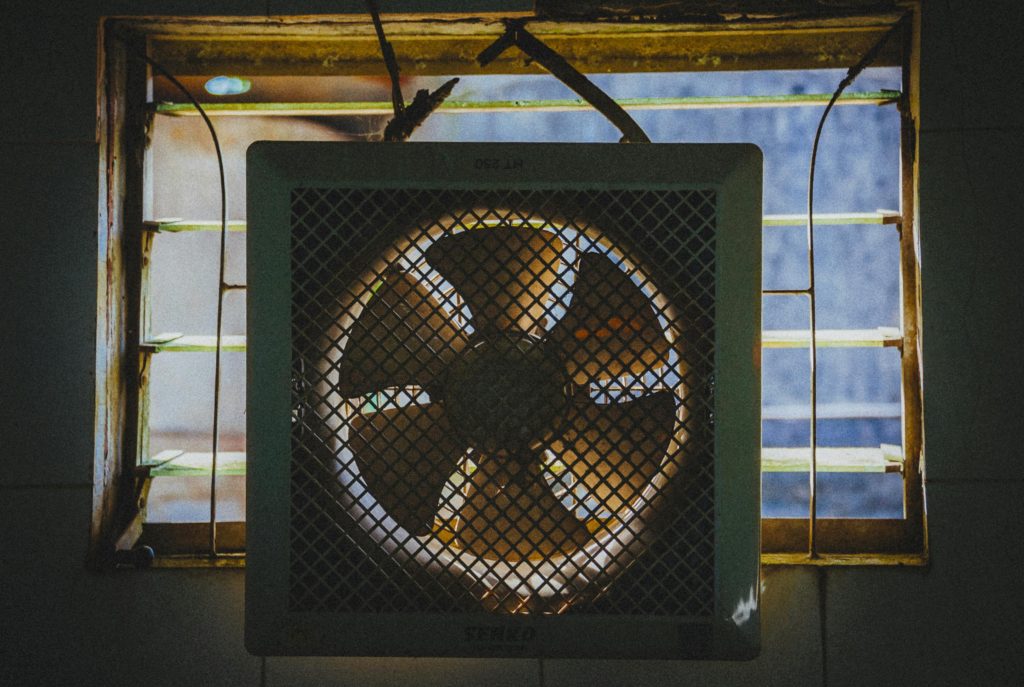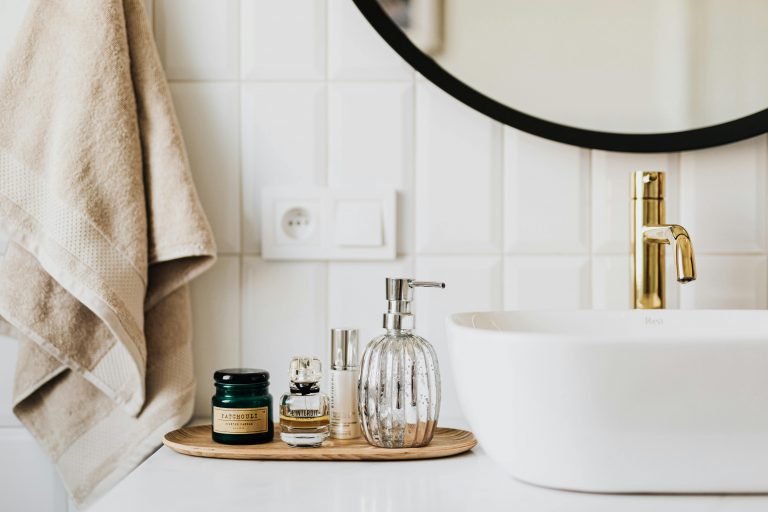Disclaimer: Benro Properties. This site provides home improvement content for informational purposes only.
A foul, sewage-like smell in your bathroom can be one of the most unpleasant experiences in your home. Whether it’s a light odor or a strong, overpowering stench, it can make your bathroom uncomfortable and uninviting. So, why does your bathroom smell like sewage, and more importantly, how can you get rid of it? Understanding the possible causes behind this smell is crucial in addressing the issue. In this article, we’ll explore common reasons for sewage odors in the bathroom and provide solutions to help you eliminate the smell for good.
1. Clogged Drains and Pipes

A clogged drain is one of the most frequent culprits behind a sewage smell in the bathroom. Over time, the combination of hair, soap scum, toothpaste, toilet paper, and other bathroom products can gradually accumulate inside your pipes, causing blockages. These blockages prevent water from flowing smoothly, and when water stagnates in the drain, it allows organic material and bacteria to grow. As these materials break down, they can release unpleasant odors that are often similar to the smell of raw sewage.
Clogs can occur in any of the bathroom drains, including those in the sink, shower, bathtub, and toilet. In some cases, these blockages may not be immediately visible or noticeable, especially if the water still drains slowly. However, as organic debris continues to build up, the smell will worsen. A blockage can also increase the risk of more serious plumbing issues, such as backups or burst pipes, which can be expensive to fix. A clogged drain is not just an aesthetic nuisance; it can also lead to long-term damage to your plumbing system if left unaddressed.
Solution:
If you notice a slow drain or a sewage smell coming from the sink, shower, or bathtub, it’s important to clear the blockage as soon as possible. You can use a plunger to try and dislodge any debris. For more stubborn blockages, you may need to use a drain cleaner or a plumber’s snake to break up the clog. If the odor persists, consider having a professional plumber inspect your pipes to ensure there are no major obstructions or issues deeper within the plumbing system.
2. Dry P-Traps
A P-trap is a U-shaped pipe under your sink, shower, or bathtub that holds a small amount of water. This water creates a seal that prevents sewer gases from traveling back into your bathroom through the drain. If the P-trap dries out, which can happen if the bathroom isn’t used for a while, the seal is broken, and sewer gases can seep into your bathroom, causing a sewage-like odor.
Solution:
The solution is simple. Run water through the drain regularly to keep the P-trap filled and maintain the seal. If you’ve been away for a long period and come back to a smelly bathroom, simply running water in the sink, shower, or bathtub for a few minutes should solve the issue. If the smell doesn’t go away, you may need to inspect the P-trap for leaks or damage.
3. Ventilation Issues

Proper ventilation is vital in any bathroom to prevent moisture buildup that can lead to unpleasant odors. When your bathroom lacks sufficient airflow, steam from showers or baths tends to linger in the air. This excess moisture can create the perfect environment for mold and mildew to thrive. These fungi release spores that not only contribute to a musty smell but can also produce a scent that closely resembles sewage. As the mold or mildew grows in damp corners, behind tiles, or around windows, it worsens the overall air quality and can make your bathroom smell stale and damp.
Inadequate ventilation can also trap smells from your plumbing system, such as those caused by clogged drains or pipes. Without proper airflow, these odors have nowhere to escape and tend to linger, becoming more pronounced. Over time, the combination of moisture, mold, and plumbing smells can make your bathroom’s air heavy with an unpleasant, sewage-like scent. To address this, it’s essential to ensure your bathroom is well-ventilated, either through an exhaust fan, open windows, or both, to maintain a fresh and dry environment and reduce odors.
Solution:
Ensure your bathroom has a functioning exhaust fan that can help ventilate the space and remove moisture. If your fan is broken or not powerful enough, consider replacing it with a more effective model. Additionally, make sure the fan is used every time the bathroom is in use, particularly after showers and baths. You can also open windows to improve airflow. Regular cleaning and mold prevention are also important to keep smells at bay.
4. Sewer Line Problems
If the smell in your bathroom resembles raw sewage, the problem could be related to issues with your sewer line. Problems such as tree roots infiltrating pipes, cracked or broken pipes, or a buildup of waste material can block or leak into the sewer line. This can result in unpleasant odors escaping into your bathroom through drains or vents.
Solution:
Sewer line issues are serious and usually require professional intervention. If you suspect that the problem lies within your sewer system, it’s important to contact a plumber immediately. They can inspect the sewer line using specialized equipment, such as a camera, to locate any blockages, cracks, or leaks. If a sewer line issue is confirmed, the plumber will need to perform repairs to fix the problem and eliminate the odor.
5. Mold and Mildew Growth
Bathrooms, due to their high humidity levels, are ideal breeding grounds for mold and mildew. These fungi thrive in damp, dark spaces where moisture is prevalent, such as underneath sinks, behind tiles, or in the corners of showers. When mold and mildew begin to grow, they can release a musty, foul smell that often resembles the odor of sewage. This smell occurs as the fungi break down organic material in the environment, releasing spores and gases that contribute to the unpleasant scent.
The presence of mold and mildew is not only unpleasant but can also be harmful to your health. Breathing in the spores released by these fungi can cause respiratory issues, allergic reactions, and exacerbate conditions like asthma. To prevent mold and mildew growth, it’s important to control moisture levels in your bathroom. Regular cleaning, using a dehumidifier, and ensuring proper ventilation can help reduce humidity and prevent these fungi from taking root, thereby eliminating the sewage-like odors they produce.
Solution:
Regularly clean your bathroom with mold-killing products, especially in areas prone to moisture, such as the shower, bathtub, and around windows. You can use natural cleaners, like vinegar or baking soda, or store-bought mold removers. To prevent mold and mildew growth, keep the bathroom well-ventilated, using the exhaust fan after showers and keeping windows open if possible. If mold or mildew growth is severe, it may be necessary to call a professional for thorough cleaning and remediation.
6. Toilet Seal Problems
Toilet seal problems, particularly with a damaged or broken wax ring, can lead to strong, unpleasant odors in the bathroom. The wax ring is responsible for creating a seal between the toilet and the floor, preventing sewage gases from escaping into the bathroom. Over time, the wax ring can deteriorate due to regular use, age, or improper installation, allowing these gases to leak out and fill the room with a foul smell. The odor can often be mistaken for the smell of sewage and is typically concentrated around the base of the toilet.
If you suspect that the wax ring is the source of the smell, it’s important to address the issue promptly to avoid further damage or contamination. A damaged seal may also cause the toilet to become loose, leading to water leaks and potential floor damage. The solution is to replace the wax ring, which may require removing the toilet and installing a new seal. While this can be a DIY project for those comfortable with plumbing tasks, it’s recommended to consult a professional plumber if you’re unsure or if the problem persists.
Solution:
To fix a broken toilet seal, you may need to remove the toilet and replace the wax ring. This can be a tricky job, so if you’re not comfortable handling plumbing issues, it’s best to call a professional plumber to replace the seal. In the meantime, you may notice that the smell worsens when you flush the toilet or when sitting on it.
7. Clogged Toilet Vents
Clogged toilet vents are another common cause of sewage-like odors in the bathroom. The vent pipe attached to your toilet allows air to flow into the plumbing system, which helps maintain proper drainage and prevents negative pressure. If this vent becomes blocked, it can lead to improper drainage, and sewage gases may begin to back up into your bathroom. The trapped gases can result in a strong, unpleasant smell that closely resembles sewage.
Common causes of vent blockages include debris such as leaves, bird nests, or even small branches that may have found their way into the vent pipe. These blockages prevent air from flowing freely, which disrupts the toilet’s plumbing system and causes unpleasant odors to linger. To resolve this issue, it’s important to check the vent pipe for any visible blockages and remove them. In some cases, you may need the help of a professional plumber to clear out deeper blockages that can’t be reached easily. Regular maintenance of your vent system will help prevent the buildup of sewage gases and keep your bathroom smelling fresh.
Solution:
Check the vent pipe on your roof for any visible blockages. If you find something blocking the vent, carefully remove it. If you’re unsure about climbing onto the roof or accessing the vent pipe, it’s best to call a plumber to clear the vent and ensure proper ventilation.
8. Grease and Soap Buildup
Grease and soap buildup in your bathroom’s drain pipes can lead to unpleasant odors that are hard to ignore. Over time, soap scum, grease, hair, and other debris accumulate inside the pipes, creating blockages that slow down water flow and cause water to sit stagnant. This stagnant water allows bacteria to grow and break down organic material, which can produce foul smells. As the buildup increases, the odor may become more pronounced, often mimicking the smell of sewage.
The combination of waste, soap, and grease creates a perfect environment for bacteria to thrive, exacerbating the bad smell. Additionally, the slow-moving water from clogged pipes can lead to unpleasant odors lingering longer than they should. To prevent this, it’s important to regularly clean your drains and remove any buildup. You can use a drain cleaner, or for a more natural solution, a mixture of baking soda and vinegar followed by hot water can help break down soap and grease. If the odor persists, it may be worth having a professional plumber inspect and clean the pipes to ensure they are free of buildup and functioning properly.
Solution:
Regularly clean your bathroom drains to remove soap scum, grease, and hair buildup. You can use a drain cleaning solution or a mixture of baking soda and vinegar to break down the buildup. A weekly cleaning routine can help prevent odors and keep the pipes flowing smoothly. For severe blockages, a professional plumber may need to be called to clear the pipes thoroughly.
Conclusion
If your bathroom smells like sewage, there could be a variety of causes ranging from clogged drains and dry P-traps to more serious issues like sewer line problems. Fortunately, many of these problems can be solved with some basic cleaning, maintenance, and, in some cases, professional help. By addressing the source of the odor and taking steps to prevent it from returning, you can restore freshness to your bathroom and ensure a healthier, more comfortable environment.
If the smell persists despite your best efforts, it’s always a good idea to consult a professional plumber who can inspect your plumbing and offer a lasting solution. A well-maintained bathroom should not only smell good but should also be free from health risks, so regular upkeep is key to preventing future issues.
